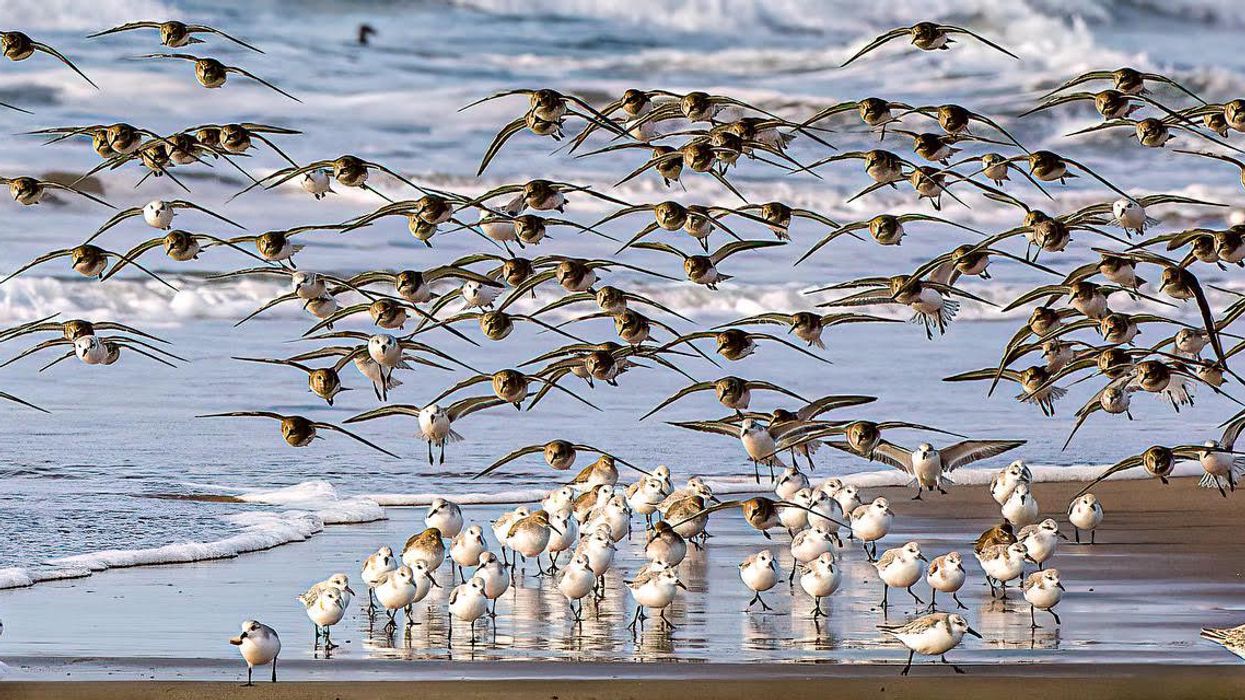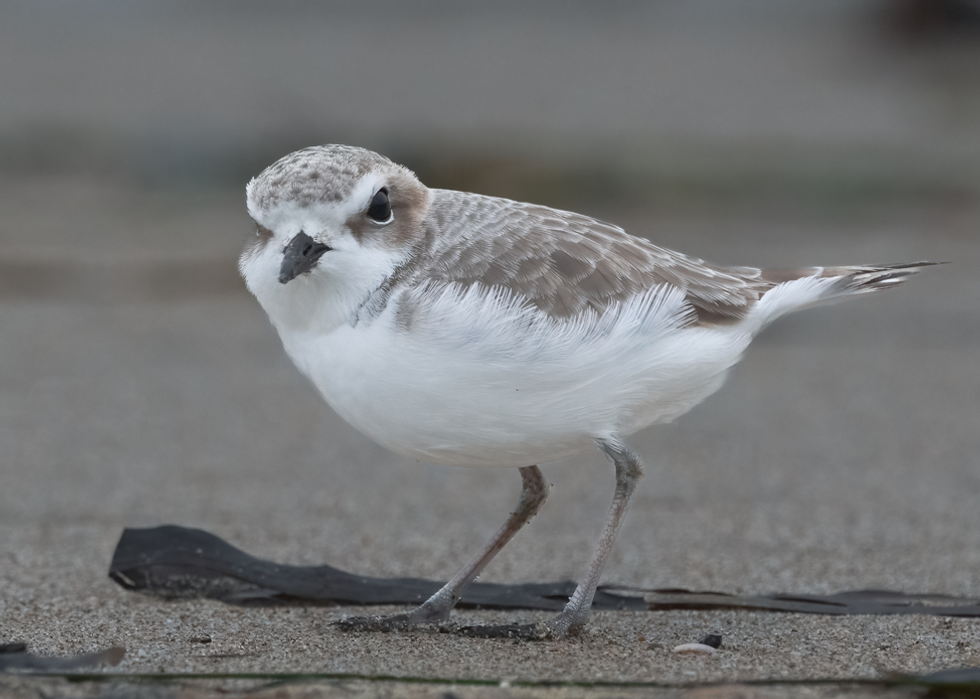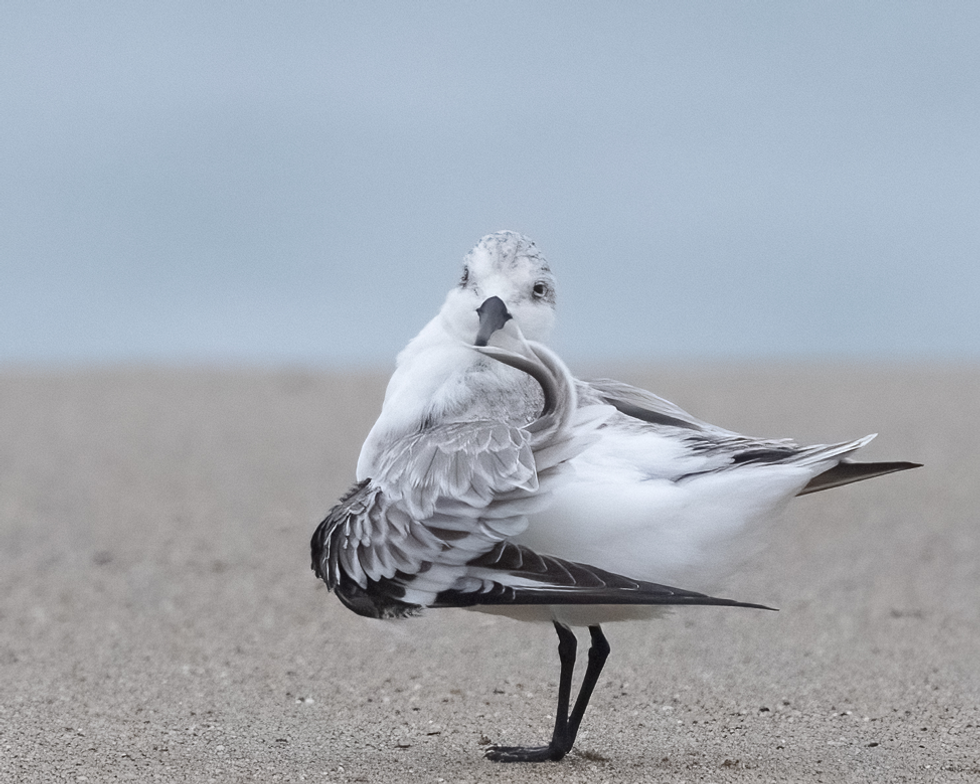
I spend most of my time focused on bad news.
Every morning at dawn I review lists of new studies about
endocrine-disrupting chemicals like bisphenol A (BPA). It can be brutal.
I can take only so much of this. My retreat is bird photography. It makes me focus on the wonders of evolutionary adaptation to difficult challenges. My pretentious goal in this effort is to become a bird version of Georgia O’Keefe. OK … I know I’ll never get that good, but I can try. I deeply enjoy helping the casual observer see intimate views of a bird they normally would never see.
I have no choice but to shut out of my mind all the bad stuff, and focus my mind and the camera on the bird in front of me, hopefully RIGHT in front of me, at minimum focusing distance or close-there-to.
My favorite subjects are shorebirds, especially sandpipers and most especially sanderlings, a species I focused upon while doing a Ph.D. on its behavior and ecology while at U.C. Berkeley in the 1970s through 1981.
I have taken tens of thousands of photographs of shorebirds. I rely on my intimate knowledge of not just what birds are doing, but what they are going to do next. And while each new generation of cameras allowed me to get better photographs, in April 2021 I acquired a camera and lens that changed the game: it shoots up to 30 frames per second.
In early December 2021 I spent three days on the beaches north of San Francisco that I studied in the ‘70s and ‘80s. I recorded almost 10,000 images. It took me two months to sort through them and another month to organize them into a coherent narrative.
On this Earth Day, with so much to worry about in the world, I hope these images convey some of the magic I experience when I am up close and personal with shorebirds.
These 32 images below are some of my favorites selected out of more than 200 from that trip to California I have put
online here.
When people go to the beach, it’s usually for relaxation or a swim or a suntan. When these birds go there after a brief nesting season in the high Arctic, it’s to feed, fight, flock, flee from predators, and sometimes to indulge in a bathing orgy or a high tide roost.
I marvel at how they thrive through what can be life or death challenges, frenzied, frenetic moments, not knowing when the next falcon will strike or whether the next mad rush down to the base of the receding wave will yield something to eat. I am awed by the precision of natural selection giving the western sandpiper extra webbing between its toes to facilitate its walking over mud while eliminating a sanderling’s hind toe to allow it to run rapidly over sand. I am thrilled to know that come May most of these winter beach birds will migrate to the Arctic, flying non-stop for days, then building nests, laying and incubating eggs, raising young and by July beginning to migrate back to this very beach.
Adaptations like those have emerged from millions of years of evolution. I am so at peace with my mind when I can breathe the ocean air and contemplate the miracles they truly are. And my commitment and resolve to leave the world a healthier place is reinvigorated, not just on Earth Day but every day.
Click the photos for a full screen view and see the Creative Commons license below.

This work is copyrighted by Pete Myers and licensed under a Creative Commons Attribution-NonCommercial-NoDerivatives 4.0 International License.
































Banner photo: Mixed flock of sanderling and dunlin on Limantour Spot. The two sanderling in the very front are carrying sand crabs.
This work is copyrighted by Pete Myers and licensed under a Creative Commons Attribution-NonCommercial-NoDerivatives 4.0 International License.

